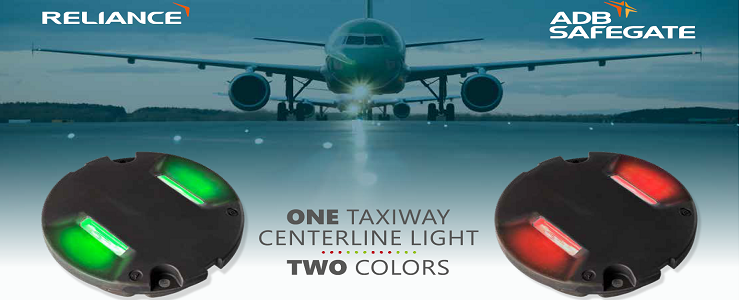
GRAZ. Ever growing complexity is the new normal for Air Navigation Service Providers (ANSPs). Today’s controllers have to be aware of a magnitude of different flight procedures, and consider a steadily growing amount of data while operating multiple systems in the control rooms, all this while putting safety first, and respecting the growing demand for efficient and sustainable routing and guidance.
All in a day’s work
Awareness of multiple flight procedures, both navigational and regulatory is a must. Different aircraft types have different equipage leading to different capabilities in operation. From the top-modern plane flying RNP-AR approaches to legacy aircraft still around for years, from always better performing jets to hot air balloons, training flights, helicopter operations to – most importantly – exploding numbers of drones.
Decision making entails taking into account an impressive number of data points.
Gone are the days when a controller was all set to go if he or she was aware of the aircraft type, runway, arrival or departure route, and surface wind. Controllers now have to consider dozens of push back procedures, night curfews, environment-based runway and SID assignment, Hold Over Times, lots and lots of meteorological data, size specific airport data, in addition to the time taken for different aspects of the turnaround process.
Multiple, disparate systems with more data, but less capacity
As traffic in the skies and on the ground grows, the control room is packed with more and more systems – mixture of hardware and software. The lack of interoperability further complicates matters. Controllers also have to use totally different human machine interfaces (HMI), and know what data is sourced from where, what to enter where, and in which form. This puts considerable pressure and adds to their workload.
Pressure to manage more traffic, fewer delays at a lower cost
ANSPs are getting more and more transparent and their operational and financial performance is published and compared. ANSP fees have to be lowered with each passing year while heavy investments in future technology and training put undue demands on an ANSP’s finances.
Supporting responsible, sustainable aviation
In recent years, controllers are finding themselves more often in a situation where they have to consider the environmental impact of their decisions. This sometimes contradicts the need for growing capacity. Even environmental goals can conflict with each other, e.g. re-routing aircraft from noise-sensitive areas can result in longer routes, hence greater fuel use and more carbon emissions.
Preparing for unmanned aircraft systems (UAS)
Today’s airspace, rules, ATC systems and procedures were not designed to support unmanned systems. The growth in this area is exponential and controllers need to be well prepared for these changes.
Fresh thinking, and new tech
There is a growing realization among civil aviation bodies such as CANSO (Civil Air Navigation Services Organization), that ANSPs need to take a more proactive approach to managing air traffic. As liberalization of air navigation services looms, ANSPs are aware they will need to put their customers first.
The winds of change are blowing.
The collaboration between ANSPs, airports and airlines is improving by introducing new concepts in air traffic flow management and Airport Collaborative Decision Making (A-CDM) to support safe, efficient and sustainable operations, while reducing delays.
Then there’s the transformative role of technology.
Digitalization, automation and artificial intelligence are inspiring aviation players to think of new ways to tackle the ever-increasing complexities that are typical of this sector.
Follow the Greens (FtG) for safer, more efficient routing and guidance
On the operations side, the focus is on safer and more efficient routing and guidance, with concepts such Follow the Greens (FtG) with floating guidance gaining ground. Several large airports are implementing this innovative guidance system to guide taxiing aircraft to their destinations. FtG ensures that there’s no ambiguity as pilots know they need to follow the green lights lit up in front of their aircraft. At the same time controllers benefit from improved situational awareness.
Here’s how FtG works: The route pilots need to follow is indicated by three green taxiway centerline lights preceding the aircraft. Currently, pilots are expected to stop in the absence of green lights, i.e. a “black hole”, but this is not regulated.
But what if they received a clearer indication to stop? With red being the universally accepted sign to stop, a red light leaves no room for ambiguity. To add an additional layer of safety, many airports choose to install extra stop bars at intersections to increase safety, but this requires additional light fixtures and circuits. This works only at intersections, and is not only costly, but is also time intensive.
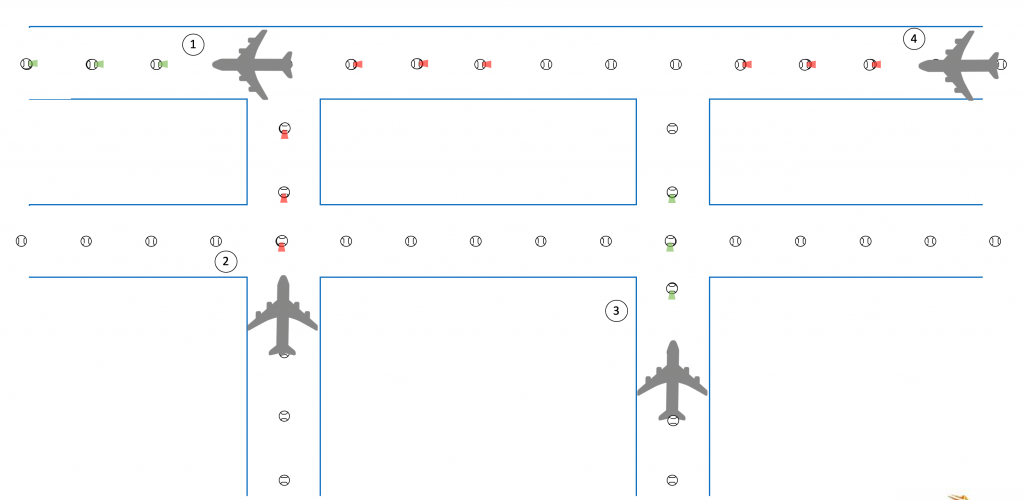
Caption: Intelligent lights can help ATC manage dense traffic more safely and efficiently
No more black holes with intelligent lights.
Intelligent lights with alternating displays could remove the ambiguity associated with “black hole” and eliminate the need for stop bars. Imagine a taxiway centerline light that can alternate between red and green displays, allowing controllers to guide the aircraft on when to stop or proceed. When the pilot sees green, it’s clear he can go and when the light switches to red, it acts as a stop bar and the pilot knows he must stop.
Operational Scenarios
• Indication for temporary closures: ATC can enhance safety by switching lights temporarily from green to red, to clearly indicate to pilots at areas that are temporary closed for construction, maintenance and snow removal.
• Autonomous Runway Incursion Warning System: ARIWS provides visual guidance (i.e. red lights) to prevent runway incursion (e.g. RWSL) or if the system detects a runway incursion. Instead of installing additional lights, the light can be switched to red to prevent an incursion.
• Safer crossing resolution: In dense traffic conditions, aircraft may taxi close to each other. Installing lights at intersections eliminates the need for stop bars and reduces costs. ATC can sequence aircraft efficiently, by indicating to pilots who has the right of way, who is first at the crossing and who has to wait. Pilots can adjust the speed in advance when they know where to stop.
• Indication for safety nets: When the ATC System detects an incursion or collision, these lights can be switched from green to red as soon as the violation is detected, to immediately stop the aircraft.
• Clearance Limit Indication: ATC can indicate to the pilot early on how far he can go so pilot can adjust speed. This boosts safety and reduces Stop/Go behavior.

A light configuration with the ability to switch between green and red is technically feasible today. Imagine how much safer and how efficient taxiing and guidance could be. Moreover, such a setup would also eliminate the need for installing stop bars at taxiway intersections which are traditionally considered hotspots.
Concepts such as FtG, that involve complex system interactions, will become the norm. As intelligent airfields evolve, one can expect to see more such out-of-the-box thinking to help airports, airlines and ANSPs support safer, more sustainable and more efficient operations so they can do more with less.
ADB SAFEGATE is a leading provider of solutions that boost efficiency, improve safety and environmental sustainability, and reduce operational costs for airports and airlines worldwide. Its solutions tackle every aspect from approach to departure – airport traffic handling, airfield lighting, tower-based traffic control systems, gate and docking automation, services and advanced analytics – to increase airport performance. ADB SAFEGATE has more than 1,000 employees in more than 20 countries and operates in more than 175 countries, serving more than 2,500 airports.





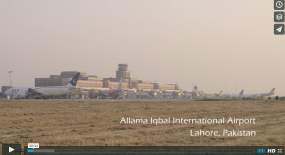


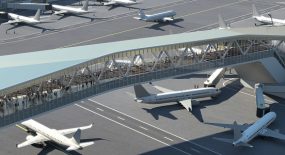


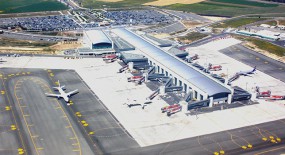



Leave a Comment